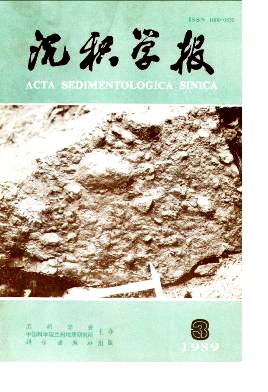THE STUDY ON THE RED SOIL OF NEOGENE IN XIAN AND BAODE OF SHANXI
- Received Date: 1987-04-08
- Publish Date: 1989-09-10
Abstract: This paper deals with the red soil of Neogene based on the data collected by field survey, chemical test and microtezture. The red soil is red and homogeneous in grain size, but it is not of stratil3cation and grains larger than sand generally. The black-brown clay film and calcareous conccretion or conccretion layers can be seen often in the red soil. According to the characteristics of the red soil being of homogeneous grain size and not being of stratification, the origin of the red soil difTers from that of normal aqueous deposit. Through miscroscopc observation, we found a considerable amount of optically oriented clay film that mainly occurs as Mowing colloid in cracks. According to the studing results in pedology. optically oriented clay film is formed by soil-forming process and,if it developed well,is the characteristic of the soils of forest more intensely leached. Consequently it can be determined that the red soil is a kind of paleosoil that underwent morestrong soil和rmation. The part of the red soil rich in black-brown clay film and optically oriented clay film is a clay horizon of the soil and the calcareous concretion layer beneath the clay horizon is a illuvial horizon. Because the development of soil is in surficial condition. the author inter that the red soil under study is mainly formed in subaerial environment and is of eolian origin. In the light of the developed degree of the optically oriented clay film and the illuvium. It is considered that there were both the forest and the forest-steppe during the formation. the CaCOlcontent is 3-S% generally and the CaCOjoccurs in the form of elastic grains or cementing material in the deposit of river-lacustrine facics. Though the CaCO3takes much amount(10- 20)in the loess,the CaC03content in recent windblown dust is only 3%.Hence a part of the CaCO3jia Quaternary loess was formed after the loess was deposited. The CaCO3content in the red soil of Ncogene is much more than that in the loess in Xian suburs. Why does the CaCO3occur in the form of concretion or concretion layers? These are the problems puzzled people. In the northwest China and the Hubci plain, the CaCO3takes 20% or so in recent soil,which indicates that a good deal of CaCO3can be produi in soil- forming process. There is a lot of calcareous concretion or concretion layer beneath the palcosol in the loess,whick demonstrates that soil-forming process is very favourable to producing calcareous concretion or concretion layers. For this reason, it can be deduced that besides a part of CaCO3transported by wind considerable and even most part of CaCO3was produced after the red soil deposited. Biology, rainwater and minerals weathered to release calcium resulted in CaCO3produced and concentrated. The deduction is consistent with the optically brentied clay film found in the red soil. By chemicial examination of the soil,it is known that SiO2s prominent, about 60%.Al203the second,generally 15-16% or so, and thenFe2O3, 6-7%.The chemical composition of the red soil is stmt lar to that of the loess,but there is a little defference in Al203that is more amount in the red soil than in the loess. The reason of why the contents of Al203and Fe2O3have more amount in the red soil than in the loess is that the accumulation of A12O3Fe203removing much slowly weathering and soil- forming process. In the granulometric composition of the red soil, the grains from O.OS to O.OOSmm take 40一4S% in most of the samples. the grade more than O.OSmmis about 20%,and finer than O.OSmm takes 35-SO% in most samples. There is the similarity between the red soil and the loess in the grain size, but the fine grains obviously relaled to clayization in soil-forming process are more in the red soil than in the loess. Although 0. OS- 0. OOSmm grains of the loess are over 50%,this grade size is changeable in component. It can be changed into very fine grains under warm and moist climate to bring about a dorm. nant grade size less山as O.OSmm instead of 0.05-O.OOSmm. By present observation and measurement. the suspended grains transported by wind are the ones less than 0.2mm, which is unchangeable character- istic of windblown dust.Consequently the grains less than O.OSmm is dominant, does not contain grains less than O.OSmm is dominant, does not contain grains larger than 0.2mm generally and is of extreme sorting. By miscroscope observation. It was known that the red soil does not contain grains larger than 0.2mm. According to mentioned above, the red soil is of the outstanding characteristics of winddrift dust. it should be eolian deposit. Most geologists hold that loess .which was deposited in 2.4Ma ago and in cold-dry climate,is a sort of mark that a great deal of the eoliaa deposit of Cainozoic era began to deposite,but on the basis of the study in this paper, as early as before the loess began to deposit,a vast amount of deposit existed, There were possibly two kinds of form of climate that is as follows during the formation of the red soil.
| Citation: | Zhao Jingbo. THE STUDY ON THE RED SOIL OF NEOGENE IN XIAN AND BAODE OF SHANXI[J]. Acta Sedimentologica Sinica, 1989, 7(3): 113-120. |






 DownLoad:
DownLoad: